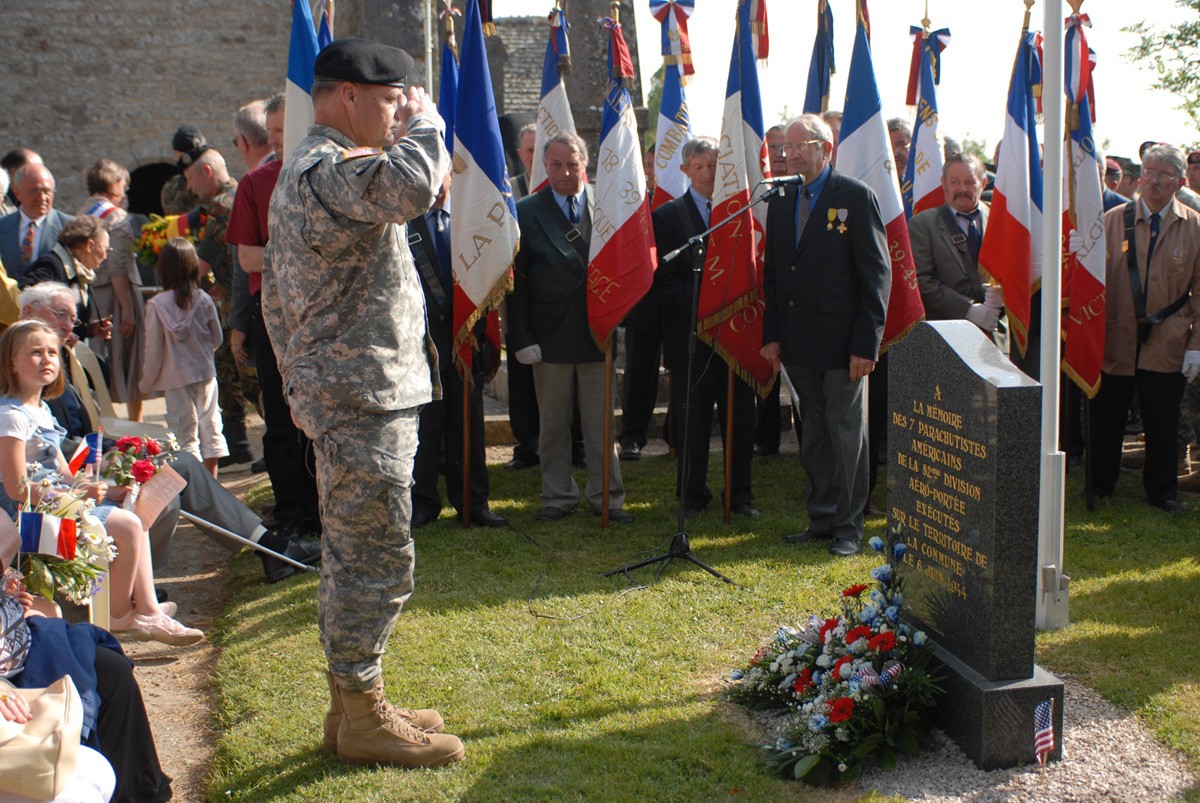
HEMEVEZ, France - Servicemembers from the United States, alongside French and German Soldiers and residents of this small village in Normandy gathered in a local churchyard June 5 to pay their respects to seven Soldiers executed by German troops during on D-Day.
The Soldiers knew they could die. They were members of the 1st Battalion, 507th Parachute Infantry Regiment - paratroopers jumping behind enemy lines. But they were not supposed to die the way they did.
On June 6, 1944, hours before the invasion of Normandy, they jumped into the fields surrounding the town. What actually happened there would remain a mystery for decades.
"Seven parachutes landed near the chateau, which was being used as German headquarters," said Ernest Moucel, who was 18 years old at the time.
In an ensuing firefight eight paratroopers were taken captive by German Soldiers. One of those paratroopers, Pvt. Ashton Landry, was able to escape.
"A gentleman named Pierre Renaut saw them (the remaining seven Soldiers) cross the field before they were killed," said Moucel.
It was in that field that the paratroopers were executed, each with a single shot to the back of the head. Because Renaut did not witness the execution, their bodies were discovered by a French farmer who was a World War I veteran.
He recognized that the Soldiers were not normal casualties of war, but victims of a war crime.
Moucel was one of four men who took the bodies of the Soldiers and gave them a proper burial in the cemetery of the town's church.
"We wanted to make sure that they were buried the same day," he said. "We wanted to give them a proper burial. It was our duty."
Twenty days later, the bodies were exhumed and reburied at the American cemetery in Colleville-sur-Mer, where today's American Cemetery and Memorial is located.
The exhumation was filmed for documentation. A historian doing research on the 507th found a copy of the film in military archives in Washington D.C., and was able to piece together the story of what happened in the field. A memorial was erected to the seven Soldiers in 2004.
Soldiers who attended the ceremony here this week said it was a moving experience.
"It warms my heart and makes me feel really good and proud to be able to pay homage to these men," said Sgt. 1st Class Dialetta Taylor, a chaplain's assistant with Special Troops Battalion, 21st Theater Sustainment Command. "I'm glad that I was given the opportunity to be here and partake in the ceremony and I'm grateful for them -- that they gave their lives for freedom."
The seven Soldiers murdered at Hemevez were: Pfc. Elsworth Heck, Pvt. Anthony Hitztaler, Pvt. Andrew Kling, Pvt. Delmar McElhaney, Pfc. Daniel Tillman, Pvt. Robert Watson and Pvt. Robert Werner.
Ashton Landry passed away in 2003.

Social Sharing